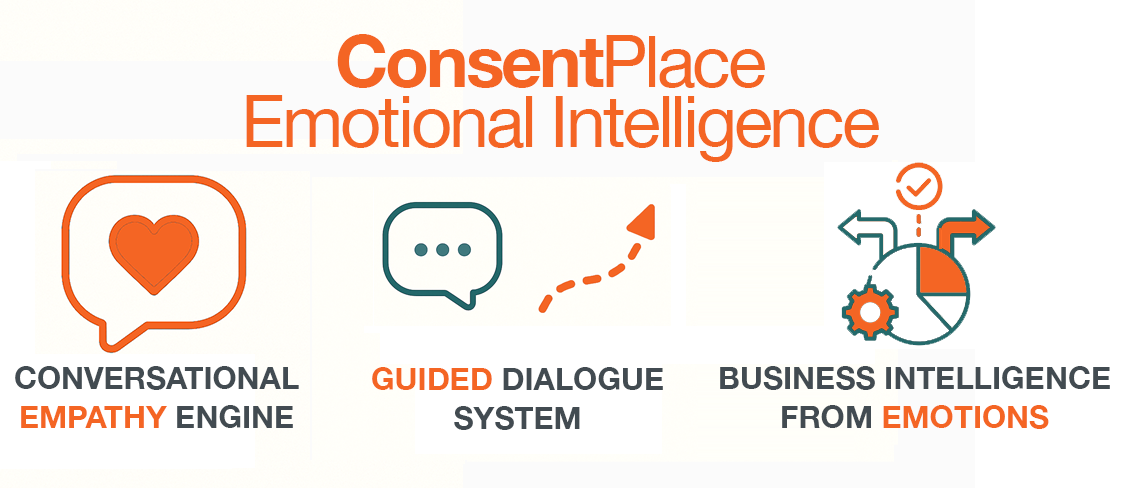
Every conversation carries more than words. It carries feelings — curiosity, hesitation, trust, frustration, excitement.
To build true Emotional Intelligence into ConsentPlace, we needed a framework that captures this emotional complexity from the very first step.
That’s why we chose Robert Plutchik’s Wheel of Emotions.

Why the Wheel of Emotions?
- Clarity → It breaks down 8 core emotions (joy, trust, fear, surprise, sadness, disgust, anger, anticipation) into something concrete and recognizable.
- Nuance → Emotions are not binary. The wheel shows gradations — from mild irritation to deep anger, from curiosity to anticipation.
- Actionability → Each emotion maps to a business signal: motivation, stress, alignment, conflict, innovation. Signals that leaders can act on.
What this means in B2B
For executives, the wheel isn’t theory. It’s a dashboard of human context:
- A retailer’s hesitation isn’t just “feedback” — it’s fear of risk.
- An investor’s excitement isn’t just “interest” — it’s trust building momentum.
- A customer’s doubt isn’t just a question — it’s insecurity you can resolve.
| Primary Emotion | Business Variant (Work Context) | Indicator |
|---|---|---|
| Joy | Engagement / Motivation | + |
| Sadness | Demotivation / Withdrawal | – |
| Anger | Frustration / Latent Conflict | – |
| Fear | Stress / Uncertainty | – |
| Trust | Team Cohesion / Team Spirit | + |
| Surprise | Innovation / Responsiveness | + |
| Disgust | Rejection / Perceived Injustice | – |
| Anticipation | Strategic Alignment | + / – |
By anchoring our Emotional Intelligence on the Wheel of Emotions, we make the invisible visible. We give leaders a way to not just listen, but to truly understand and respond.
Question to our readers:
If you could instantly detect one emotion in your ecosystem — employees, partners, customers — which would you choose first?
Tell us here:

1 comment